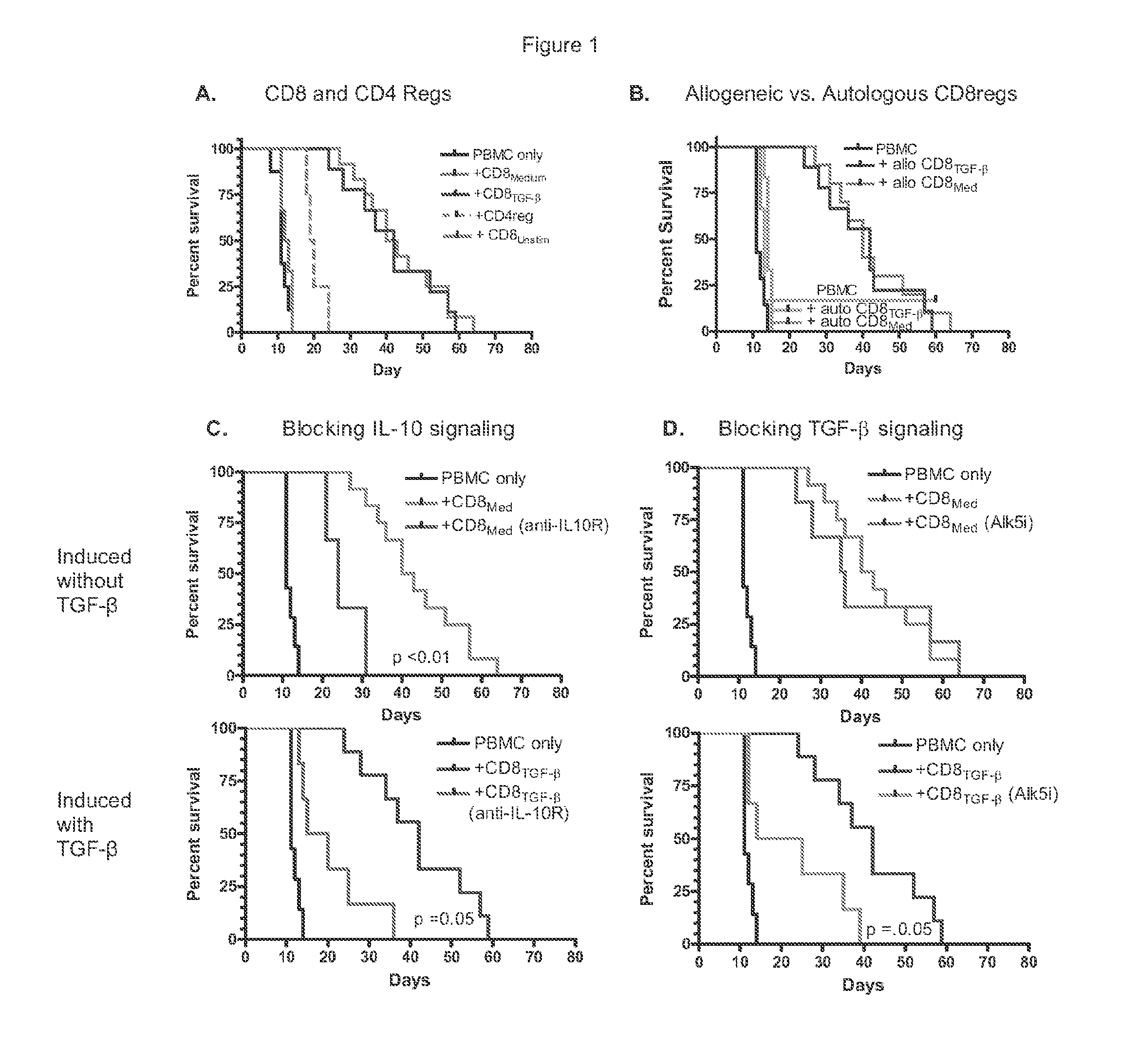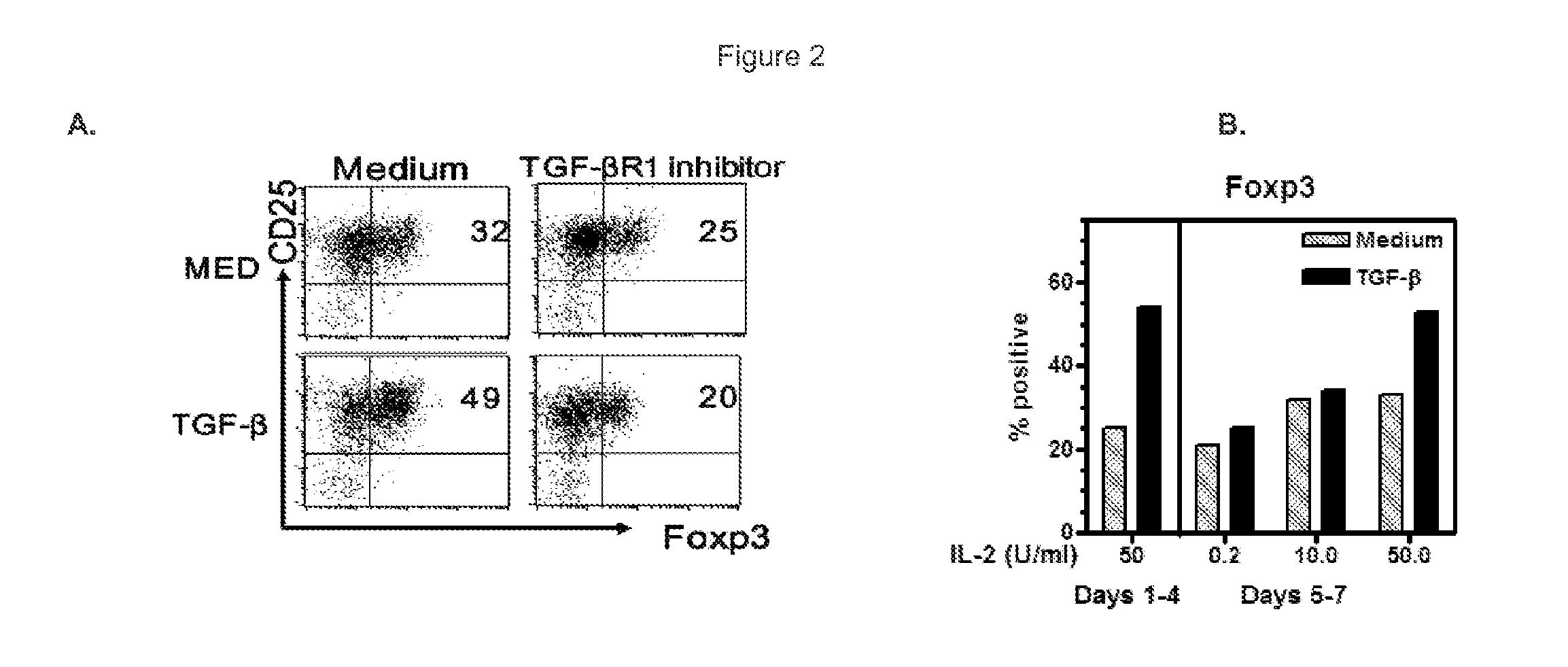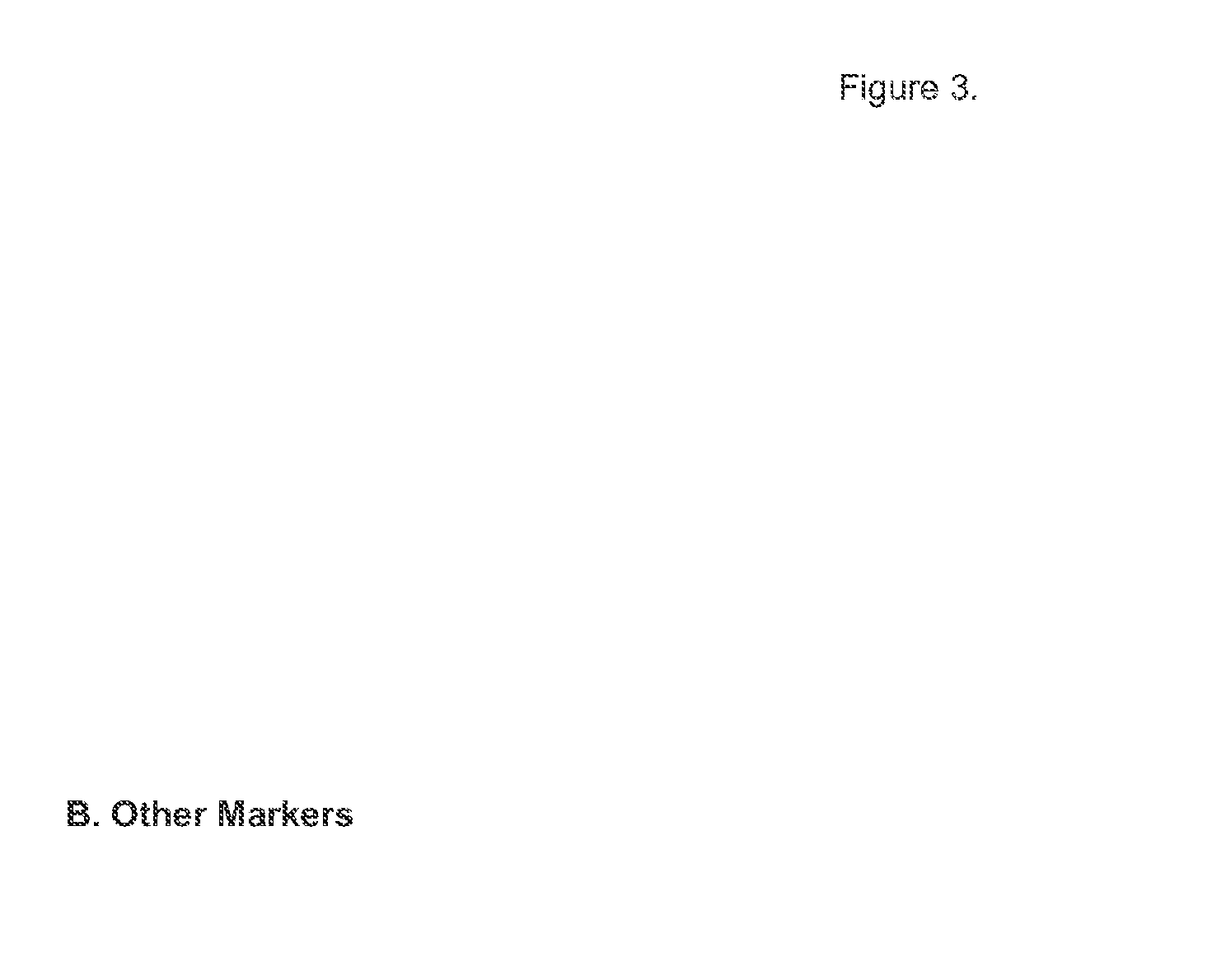Methods and compositions for generating and using allogeneic suppressor cells
a technology of suppressor cells and compositions, applied in the direction of biocide, peptide/protein ingredients, antibody medical ingredients, etc., can solve the problem of reducing the functional properties of allogeneic suppressor cells
- Summary
- Abstract
- Description
- Claims
- Application Information
AI Technical Summary
Benefits of technology
Problems solved by technology
Method used
Image
Examples
example 1
CD8+ Cells Stimulated with Anti-CD3 and Anti-CD28 Coated Beads have Strong Protective Activity in Humanized Mice and Preferentially Target Allogeneic T Cells
[0100]Because in vitro suppressor assays may not reflect the protective effects of Tregs in vivo, we elected to use immunodeficient mice to study the suppressive effects of human naïve CD8+ cells stimulated with anti-CD3 / 28 coated beads, IL-2±TGF-β. Since first reported by Mutis and co-workers (T. Mutis et al., Human regulatory T cells control xenogeneic graft-versus-host disease induced by autologous T cells in RAG2− / −gammac− / − immunodeficient mice. Clin Cancer Res 12, 5520 (Sep. 15, 2006)) we and others have used this assay to investigate the protective effects of expanded endogenous CD4+CD25+ Foxp3+ Tregs and CD4 iTregs induced ex-vivo with IL-2, TGF-β and retinoic acid (L. Lu, et al., Characterization of protective human CD4CD25 FOXP3 regulatory T cells generated with IL-2, TGF-beta and retinoic acid. PloS one 5, e15150 (201...
example 2
CD8+ Cells Stimulated with Anti-CD3 / 28 Beads Strongly Express IL-2Ral3 Chains, TNFR2, Negative Co-Stimulatory Molecules Including PD-L1, and TGF-β Dependent Foxp3
[0106]Like CD4+CD25+ Foxp3+ Tregs (L. Lu, et al., Characterization of protective human CD4CD25 FOXP3 regulatory T cells generated with IL-2, TGF-beta and retinoic acid. PloS one 5, e15150 (2010)), CD8+ cells stimulated with anti-CD3 / 28 beads strongly express CD25 and CD122. Thirty to 40% of stimulated CD8+ cells displayed Foxp3. This was enhanced by adding TGF-β and adding an alk5 TGF-βR1 signaling inhibitor decreased Foxp3 to baseline levels expressed by activated CD8 cells (˜20%) (See FIG. 2A). TGF-β enhanced Foxp3, however, was not stable. Sustained high levels required the addition of >20 U / ml IL-2 every three days. As shown in FIG. 2B, Foxp3 expression decreased if lower amounts were added. Thus, as demonstrated for CD4regs, both IL-2 and TGF-β have important roles in Foxp3 expression by CD8+ cells (M. O. Li et al., Tr...
example 3
CD8 Tregs Sustained by TGF-β Preferentially Target Alloqeneic T Cells
[0108]Similar to the in vivo studies, TGF-β was not needed for the inhibitory effects of anti-CD3 / 28 activated CD8 cells. FIG. 4A shows that within 2 days after activation, CD8+ cells had developed strong in vitro suppressive activity. However, by day 5 the suppressive activity by CD8+ cells stimulated without TGF-β began to decline while those with added TGF-6 did not. A likely explanation for this effect is the ability of TGF-β to protect CD8 cells from apoptosis (M. O. Li et al., Transforming growth factor-beta controls development, homeostasis, and tolerance of T cells by regulatory T cell-dependent and -independent mechanisms. Immunity 25, 455 (September, 2006)).
[0109]Also consistent with the in vivo protective effects described above was that suppressive activity in vitro against allogeneic CD4+ cells was greater than against autologous cells (See FIGS. 4B and 4C. This characteristic distinguishes these CD8re...
PUM
| Property | Measurement | Unit |
|---|---|---|
| Composition | aaaaa | aaaaa |
| Electrical resistance | aaaaa | aaaaa |
Abstract
Description
Claims
Application Information
 Login to View More
Login to View More - R&D
- Intellectual Property
- Life Sciences
- Materials
- Tech Scout
- Unparalleled Data Quality
- Higher Quality Content
- 60% Fewer Hallucinations
Browse by: Latest US Patents, China's latest patents, Technical Efficacy Thesaurus, Application Domain, Technology Topic, Popular Technical Reports.
© 2025 PatSnap. All rights reserved.Legal|Privacy policy|Modern Slavery Act Transparency Statement|Sitemap|About US| Contact US: help@patsnap.com



